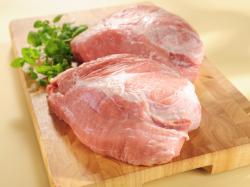National Pork Board Sees Increase In Summer Pork Sales
July 26, 2013 | 2 min to read

DES MOINES, Iowa – The United States Department of Agriculture has announced that June 2013 frozen pork supplies are down 14 percent from the previous month, and down nearly 5 percent on a year-over-year basis, reflecting higher demand for pork.
According to the July 23, 2013,Daily Livestock Report, total pork inventories at the end of June were 564.9 million pounds, or 4.7 percent lower than in June 2012. TheDaily Livestock Report- written by economists Steve Meyer, Ph.D. and Len Steiner – also noted that "pork stocks normally decline in June, but this year the month-to-month change in pork inventories was 14.3 percent, the largest volume depletion in 20 years."
"At a point in time when pork production is high and domestic supplies are up, this shift in inventories is great news for our producers," said Karen Richter, a farmer from Montgomery, Minn. and president of the National Pork Board. "This market shift demonstrates that pork is hot right now and has a momentum that continues to build throughout the traditional summer grilling season."
Earlier this week the Pork Checkoff wrapped up a six-week radio advertising campaign in an effort to capitalize on new pork chop names and favorable pork prices for consumers. The report of lower frozen inventories is occurring on the heels of both the consumer campaign and aggressive promotions with major grocery retailers. The retail promotions featured ribs and chops, with specific advice at the meat case to cook pork chops "like a steak."
"For the past eight weeks, we have been reaching out to consumers and it is paying off," Richter said. "By building relationships and launching promotional campaigns with America's top food retailers, we are seeing a boon in pork sales."
Consumer education about the value and versatility of pork, the adoption of new pork cut names, and reinforcement of pork's ideal cooking temperature were the Pork Checkoff's key consumer messages. The new porterhouse pork chop, ribeye pork chop and New York pork chop were specifically featured in the summer marketing campaign.
"The previous nomenclature was confusing to consumers," Richter said. "We listened to our consumers and chose the new cut names in order to enhance the value in the meat cuts, and used new, simplified labels that better explain proper cooking techniques. Pork remains a great value for consumers today, and the surge in pork sales this summer is great news for pork producers as well."
The National Pork Board has responsibility for Checkoff-funded research, promotion and consumer information projects and for communicating with pork producers and the public. Through a legislative national Pork Checkoff, pork producers invest $0.40 for each $100 value of hogs sold. Importers of pork products contribute a like amount, based on a formula. The Pork Checkoff funds national and state programs in advertising, consumer information, retail and foodservice marketing, export market promotion, production improvement, technology, swine health, pork safety and environmental management. For information on Checkoff-funded programs, pork producers can call the Pork Checkoff Service Center at (800) 456-7675 or check the Internet at www.pork.org.
Source: The National Pork Board
